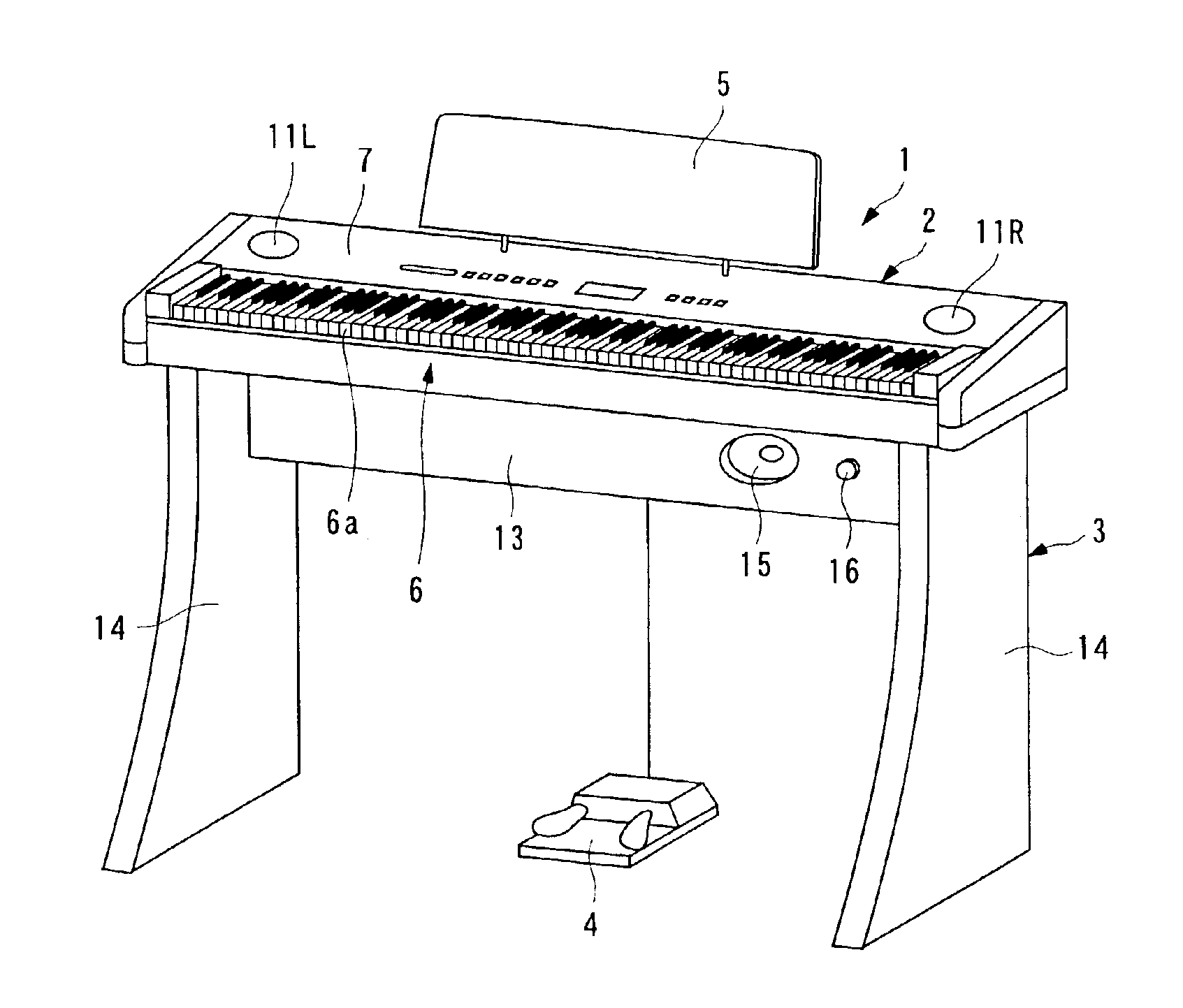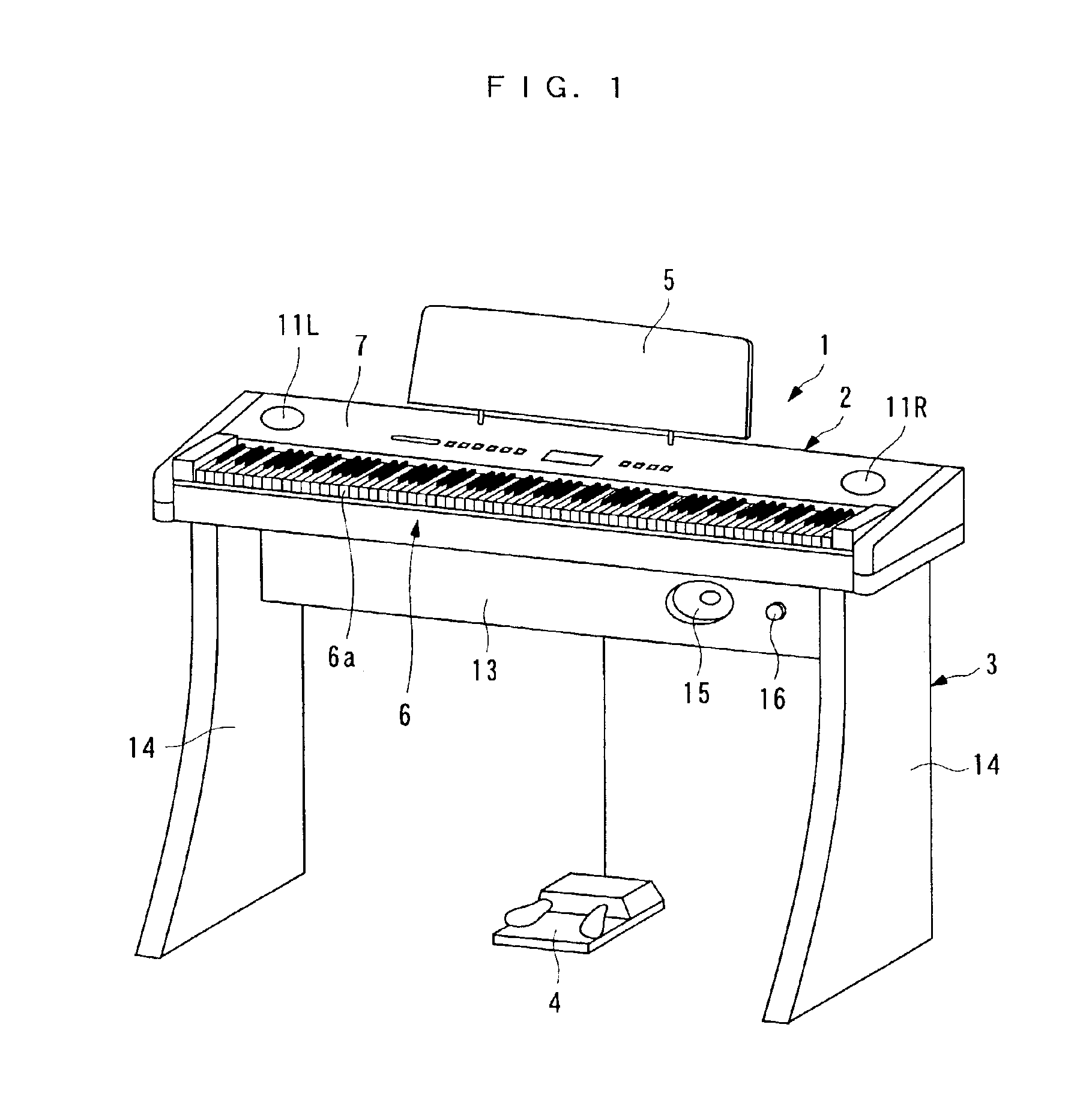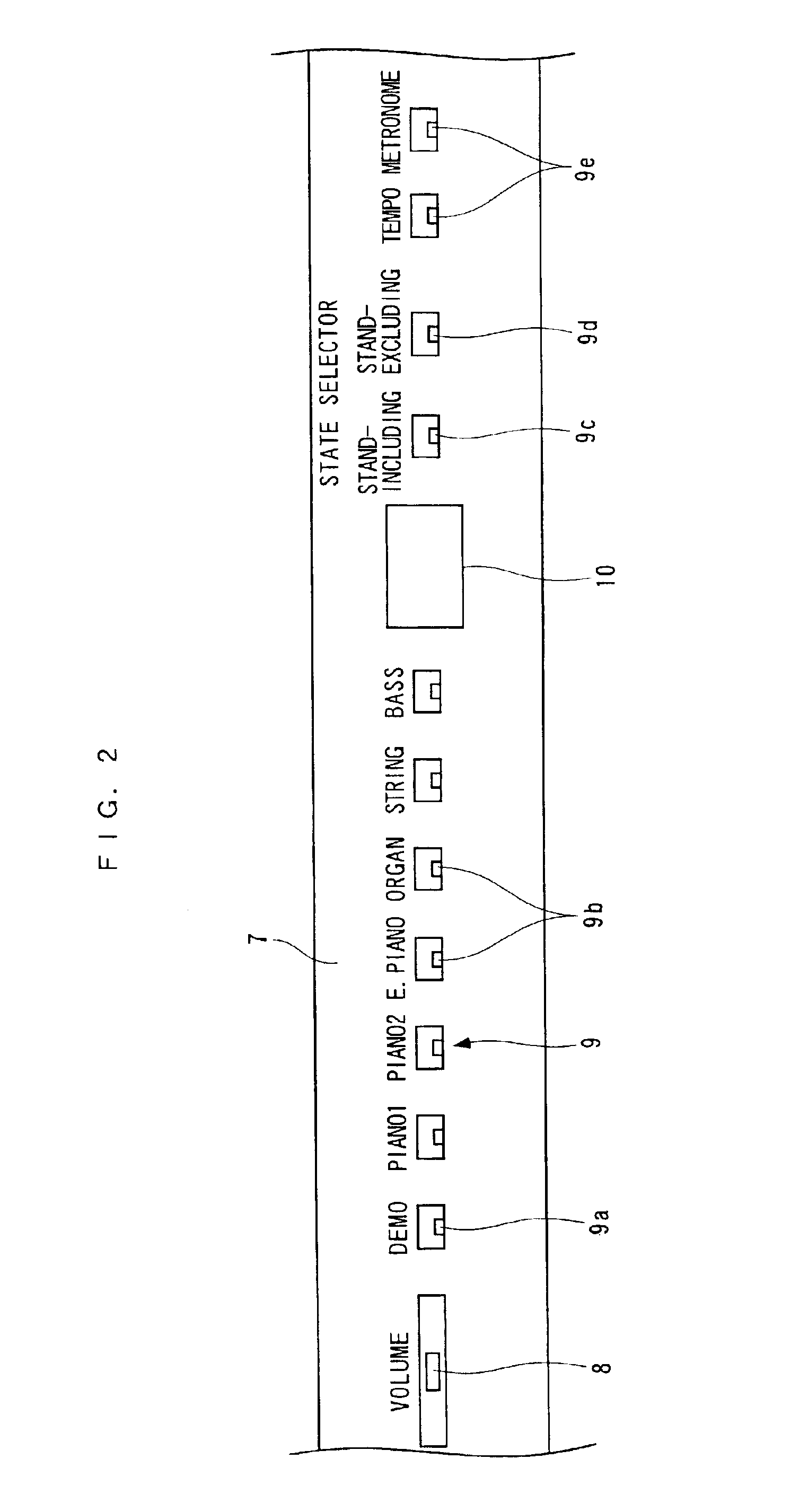Acoustic control system for electronic musical instrument
a technology of electronic musical instruments and control systems, which is applied in the direction of instruments, transducer details, electrophonic musical instruments, etc., can solve the problems of difficult to obtain excellent acoustic characteristics, powerless sound of electronic pianos, and inability to increase the diameter of each speaker or the number of speakers, etc., to achieve convenient speaker layout configuration, effective utilization of space, and more space available
- Summary
- Abstract
- Description
- Claims
- Application Information
AI Technical Summary
Benefits of technology
Problems solved by technology
Method used
Image
Examples
Embodiment Construction
[0036]The invention will now be described in detail with reference to the drawings showing preferred embodiments thereof.
[0037]Referring first to FIG. 1, there is shown an electronic piano incorporating an acoustic control system according to the invention. This electronic piano 1 has a piano body 2 (musical instrument body) and a stand 3 supporting the piano body 2, and further includes a pedal 4 and a music stand 5. The stand 3 is removably attached to the piano body 2 by left and right screws, not shown. That is, the electronic piano 1 is a portable type which can be carried without the stand 3 by removing the same from the piano body 2.
[0038]On the top of the front portion of the piano body 2, there is arranged a keyboard 6 in a manner extending in a left-right direction, as viewed in the figure, while on the top of the rear portion of the same, there is arranged an operation panel 7. The keyboard 6 is comprised of numerous keys 6a and key switches, not shown, each of which is o...
PUM
 Login to View More
Login to View More Abstract
Description
Claims
Application Information
 Login to View More
Login to View More - R&D
- Intellectual Property
- Life Sciences
- Materials
- Tech Scout
- Unparalleled Data Quality
- Higher Quality Content
- 60% Fewer Hallucinations
Browse by: Latest US Patents, China's latest patents, Technical Efficacy Thesaurus, Application Domain, Technology Topic, Popular Technical Reports.
© 2025 PatSnap. All rights reserved.Legal|Privacy policy|Modern Slavery Act Transparency Statement|Sitemap|About US| Contact US: help@patsnap.com



